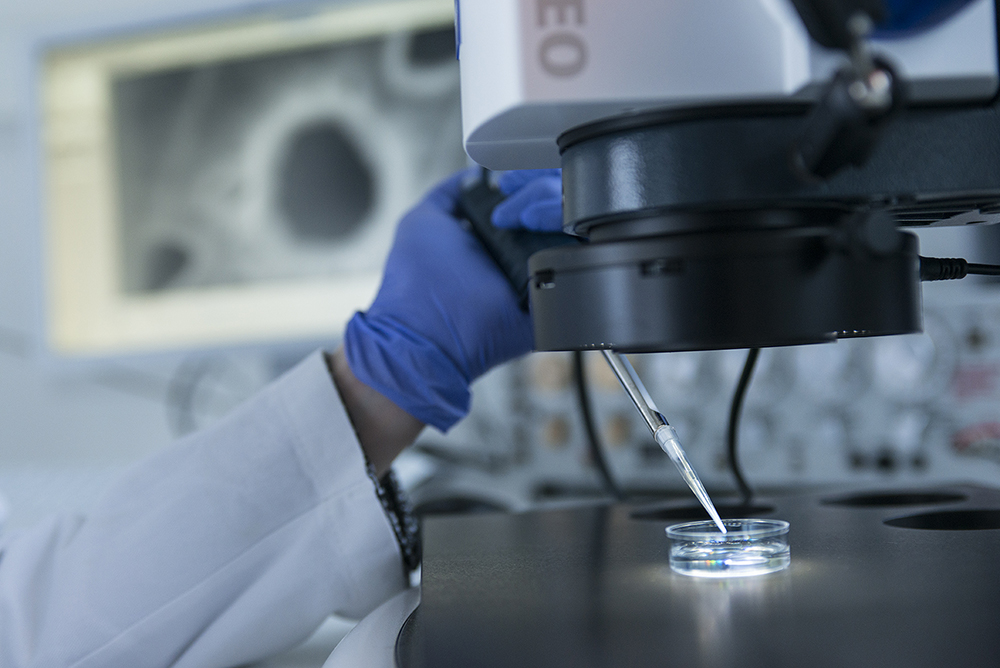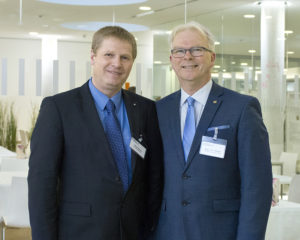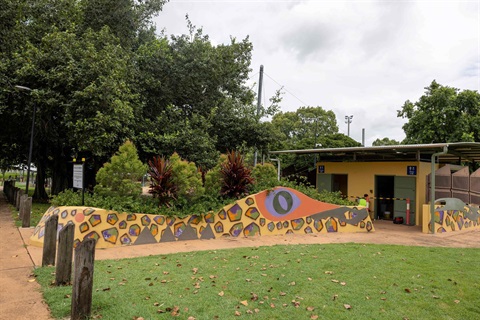
Australian and German researchers from the international consortium ® (Fraunhofer International Consortium for Anti-Infective Research), comprising of Griffith University’s and German partners (ITEM), the (MHH), and newly-appointed partner the (HZI), has commenced a joint project to develop treatments against SARS-CoV-2, the virus that causes COVID-19.
This vital COVID-19 research has been supported by the Queensland Government and the City of Gold Coast, each providing $100,000 to the Australian node of Fraunhofer iCAIR® COVID-19 project and follows on from the Queensland Government’s and the City of Gold Coast’s initial $1.45 million support of the Fraunhofer iCAIR® program.
“This Australian-German alliance establishes a development platform that covers all the steps of a targeted drug development process, from identifying potential points of attack, right through to drug design and efficacy testing,” said Professor AO, Director of the Institute for Glycomics and iCAIR® project manager in Australia.
“The iCAIR® consortium allows us to join forces with three of Germany’s most respected research institutions to tackle pathogen-related respiratory diseases. We are delighted to be in partnership with these institutions and provide an Australian hub for these technologies,” Professor von Itzstein AO said.
“Our new partner, the , brings an enormous complementary powerhouse in infectious disease research expertise that will make significant impact on a number of our drug and vaccine discovery programs.
“The alliance is very grateful for this funding towards our COVID-19 research. It will help us find cures for COVID-19 through drug-repurposing screens using our advanced ex vivo human models, develop new drugs based on these findings, and discover new vaccines to prevent the disease, which we need more than ever as we face this global pandemic.”

(Copyright Fraunhofer ITEM – Photographer Ralf Mohr)
“Striving to develop a drug for COVID-19 treatment, we combine our expertise and pool a broad spectrum of methods in this research alliance – from the identification of therapeutic targets and drug candidates via drug design and efficacy testing in preclinical models to toxicological studies,” said Professor Armin Braun, Fraunhofer ITEM Division Director of Preclinical Pharmacology and Toxicology and one of the iCAIR® project managers.
The researchers are first screening existing drug and drug-like substance libraries for candidates that stop SARS-CoV-2 infection.
“We made use of libraries available at the Institute for Glycomics and HZI. Furthermore, Fraunhofer IME with its in Hamburg and expertise in drug discovery based on high-throughput technology is involved,” Professor Braun said.
Identified drug candidates will then be further optimised to maximise their efficacy and safety. Efficacy and tolerability testing will be performed in advanced human respiratory cell-based infection models and human precision-cut lung slices (hPCLS).
This viable, immunocompetent lung tissue model enables detailed analysis of biological and immunological responses to the virus in the deep lung – which is where the SARS-CoV-2 infection is most harmful. A unique human test system is thus available for safety and efficacy testing of novel medications.

iCAIR® will systematically develop the most promising candidates further to achieve an inhaled administration, as SARS-CoV-2 primarily infects the airways and lungs.
Administering therapeutics via the airways enables high local concentrations at the site of infection, reducing the required doses of active substance. In addition, systemic side effects can be minimised.
Fraunhofer ITEM experts will test the drug candidates selected for inhaled administration in an in-house developed and patented in vitro exposure system – . This system allows inhaled administration of the drug candidates into the lung to be mimicked by using human airway epithelial cells or hPCLS. Potential local cytotoxic effects can thus be ruled out and the best candidates for further preclinical development can be identified.
“The iCAIR® consortium is ambitious; together, we want to expedite the advancement of new drugs. Unfortunately, there is still a significant gap between the discovery of new agents and their further development into usable therapeutics, which we have to bridge even faster now with our combined synergies to curtail the COVID-19 pandemic,” Professor von Itzstein AO said.








